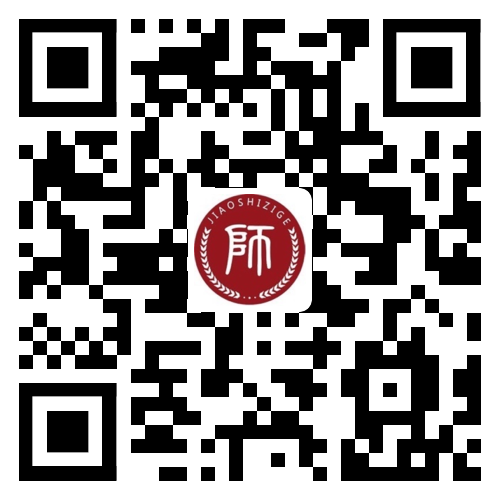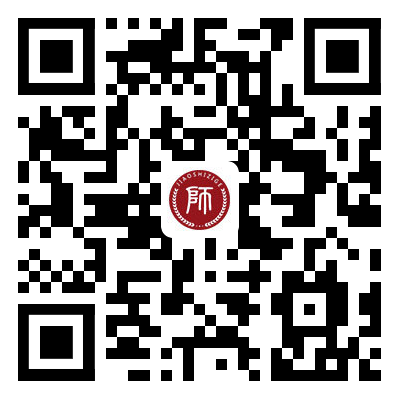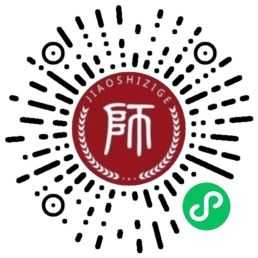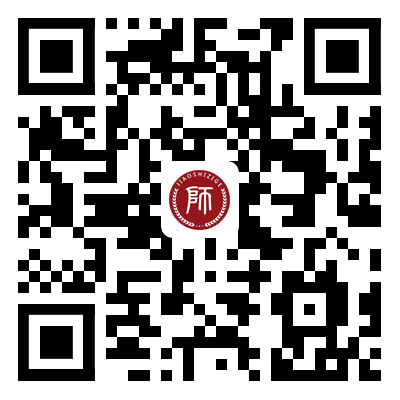北京高级中学教师资格笔试《英语学科知识与教学能力》考试大纲
- 时间:
- 2019-01-18 09:41:16
- 作者:
- 张老师
- 阅读:
- 来源:
- 北京市教师资格网




北京教师资格网将提供北京教师招聘最新考试公告、面试公告及北京各区教师新闻等。为考生提供便利的考试信息查询通道。更多北京教师招聘信息、北京教育新闻敬请关注北京教师资格网。>>>2019年北京教师资格笔试科目考试大纲
一、考试目标
1.英语学科知识与能力
具有扎实的英语语言基础知识和语言能力;具备从事高中英语教学所需要的英语语言能力;能理解有关英语国家的语言、历史和文化等相关知识。
2.英语学科教学知识与能力
掌握外语教学基本理论、英语教学专业知识与国家英语课程标准内容等学科教学知识,并能用以指导高中英语教学。
3.英语学科教学设计能力
能够根据英语学科特点,针对高中学生的认知特点、语言水平和学习需要选择并设计合理的教学内容,形成完整合理的教学方案。
4.英语学科教学实施能力
理解高中英语课堂教学实施的基本原则和方法,具备实施语言课堂教学的基本能力;能够根据教学设计,结合教学实际情况,采用恰当的教学手段,引导学生进行有效学习。
5.英语学科教学评价知识与能力
了解高中英语课堂教学评价的基本知识和方法,能够对学生的语言学习进行恰当的评价;了解教学反思的基本方法和策略,能够对自己的课堂教学实践进行反思,提出改进的思路。
二、考试模块内容与要求
(一)语言知识与能力
1.掌握英语语言的基础知识,了解语言学研究中与语言教学相关的基本概念和知识,并能在课堂教学中加以运用。
2.具有良好的英语语言运用能力,包括用英语进行书面表达、获取教学资源和信息、表达思想情感和与学生良好沟通的能力;能够筛选并改编适合高中学生英语水平的语言材料。
3.能在语篇中理解英语国家的语言、历史和文学等相关的社会文化知识。
(二)语言教学知识与能力
1.了解外语教学基本理论,理解语言观、语言学习观、语言教学观等对高中英语教学的指导作用。
2.理解国家颁布的英语学科课程标准的目标内容(语言技能、语言知识、情感态度、学习策略和文化意识),以及课程标准的其他相关知识,并能在教学设计与实施中运用。
3.掌握英语语言知识(语音、词汇、语法、语篇等)的教学基本原则、讲解和练习方法。
4.掌握英语语言技能(听、说、读、写)教学的基本原则和训练方法。
5.能结合中外社会文化语境,设计并实施英语知识和技能的教学与训练。
(三)教学设计
1.了解高中学生的认知特点、已有的英语知识、语言能力和学习需求,能够说明教学内容与学生已学知识之间的联系。
2.理解课程标准的目标要求,能够根据学生的特点选择恰当的教学内容。
3.能够根据教学内容和学生特点设定合理、明确与具体的教学目标。
4.能够根据教学目标创设相应的教学情景,设计有效的教学活动,安排合理的教学过程,筛选适当的辅助教学材料。
5.能够根据教学内容和教学过程,设计有效的学习评估活动。
(四)教学实施与评价
1.掌握英语课堂教学的基本步骤与方法,能够创设教学情景,激发学习动机,引导学生参与语言学习活动。
2.掌握指导学生学习的方法和策略,能依据英语学科和学生的特点,根据教学实际情况,恰当地运用语言讲解、练习、提问、反馈等方法,帮助学生有效学习。
3.掌握课堂管理的基本方法,熟悉课堂活动的常用组织形式,能在教学活动中以学生为中心组织教学,能在课堂教学的不同阶段发挥教师的作用。
4.掌握课堂总结的方法,能适时地对教学内容进行归纳、总结与评价,科学合理地布置作业。
5.掌握基本的现代教育技术,能够针对不同的教学内容与教学目标,整合多种资源,选择恰当的辅助教学手段进行有效教学。
6.了解形成性评价和终结性评价的知识与方法,并在高中英语教学中合理运用。
7.了解教学案例评析的基本方法,能够对教学案例进行评价。
8.了解教学反思的基本方法和策略,能够对自己的教学进行反思并提出改进思路。
三、试卷结构
| 模 块 | 比 例 | 题 型 |
| 语言知识与能力 | 27% | 单项选择题 |
| 语言教学知识 | 27% | 单项选择题 简 答 题 |
| 教学设计 | 27% | 教学设计题 |
| 教学实施与评价 | 19% | 教学情境分析题 |
| 合 计 | 100% | 单 项 选 择 题 : 约40%非 选 择 题 : 约60% |
I.语言知识与能力
1.单项选择题(语言知识)
(1)Thousands of ex-army officers have found _________ jobs in private security firms in the US.
A.lucrative B.ludicrous
C.longish D.lucky
(2)The manager persuaded the team to play the game. What actually happened according to this statement?
A.The manager played hard.
B.The team played hard.
C.The team actually did not play.
D.The manager actually did not play.
2.单项选择题(阅读理解)
Human beings are an irritant to Mother Nature, and in spite of the fact that it took their brains five million years to evolve, She can rid Herself of them in an instant. This, however, may not be necessary, since humans seem to be racing to see if they can save Her the trouble. They behave so arrogantly, contending they are superior to Nature. Rain forests are being cut down or burned—not only polluting the air but also causing a drop in oxygen levels. The love affair people have with their automobiles, especially “gas hog” SUV’s, adds to the pollutants in the air and is, yet, another nail in their coffins. Since prehistoric times, humans have been stalking and killing animals, causing many, beginning with the mastodon and saber-toothed tiger, to become extinct. Modern civilization is rushing headlong to slaughter animals in wholesale lots, all the while trying to prove its superiority to Mother Nature, usually with disastrous results.
For thousands of years, humans also have been defacing the earth, making scars upon the land. The throngs of people who responded to the lure of gold in the Yukon totally stripped mountainsides of trees above the Yukon River to make rafts in order to sail 500 miles to Dawson. Forty percent never made it! In the populated areas of the Himalayas very few trees remain since the citizens have cut them down for cooking and heating fires. With most of the trees gone, erosion occurs on a large scale, washing away most of the topsoil, making food production difficult. Even more disturbing is the fact that, due to large-scale cutting, the famous cedars of Lebanon, mentioned in the Bible, no longer exist. Along the same lines, so much of the rain forest in Panama is being destroyed that scientists are predicting the Panama Canal could fill with silt, thus prohibiting ships from crossing the isthmus, due to the effects of deforestation.
Deforestation and erosion, along with changing weather patterns, have led to the fastest-growing regions on this planet—deserts. All the while, populations are exploding worldwide and the proliferation of deserts means there is less arable land to feed the increasing number of people. Starvation on a massive scale will run rampant, and whenever a noted ecologist or environmentalist sends out warnings about such dangers to human life, very few consider giving up any of their conveniences. For instance, they insist on using aerosols and traveling one-to-a-car, thus adding to the emissions, which cause the ozone holes to expand, leading to more cases of skin cancer—a vicious cycle, indeed.
To make matters even more critical, global warming is becoming an ever-increasing threat to the existence of humans and animals. Polar icecaps are melting, and sections, the size of the state of Rhode Island, are breaking off. Traveling toward the Temperate Zones, they begin to melt, placing an inordinate amount of fresh water into the oceans and causing an imbalance.
Humans further complicate their lives by allowing businesses to release pollutants in urban areas, in the name of profit. “Accidents” often take place at refineries where toxic fumes are released into the air that people and animals breathe. Pesticides are so widely used and pose such a threat that it is amazing all of them haven’t been banned.
Governments, anxious to appease money-hungry corporations and their stockholders, have allowed timber companies into National Forests to cut virgin-growth trees. Most of these businesses clear cut vast areas and often wait an inordinate amount of time to replant.
Burning questions never cease: When will governments—local, state, and federal—corporations, and the rest of the human race realize what is happening to this planet? When will the race for profit cease to consume them? Perhaps it will come about when there is no land left to farm and feed the burgeoning population, or there is no clean water left to drink, or wildlife to balance the ecosystem, or, more importantly, when their children start dying. By that time, however, it probably will be too late.
1.In Paragraph 1, “another nail in their coffin” is similar in meaning to______.
A.a bad luck B.going dead
C.a blessing in disguise D.going from bad to worse
2.The author purposefully capitalizes the initial letters of Mother Nature because ______.
A.the author is clearly being sarcastic and suggesting that human beings show no respect for the nature
B.the author wants to emphasize the point that nature, like our mother, provides us with nourishment
C.they are used here as a proper noun personifying the might power of nature
D.they are words of very special importance
3.The author implies that travelling one-to-a-car______.
A.is an environmentally-friendly travel option
B.should be discouraged
C.should be encouraged
D.should be punished
Transcribe the sound represented by the underlined letter(s) in the words and then describe it. (10 points)
II.语言教学知识与能力
1.单项选择题
Which of the following activities belongs in communicative practice?
A.Repeating sentences that the teacher says.
B.Doing oral grammar drills.
C.Reading aloud passages from the textbook.
D.Giving instructions so that someone can use a new machine.
2.简答题(中文作答)
(1)请辨析下列两个句子的不同点并解释原因。
Did you eat something this evening?
Did you eat anything this evening?
(2)英语教师应该如何看待并处理学生的语言错误?请举例说明。
III.教学设计
教学设计题:根据所提供的信息和语言素材进行教学设计,本题用英文作答。
请根据以下信息和语言素材进行教学设计,本题用英文作答。
设计任务:阅读以下信息和语言素材。假设你将利用此语言素材提高学生的阅读能力,请根据学生情况设计针对此素材的教学目标,以及实现该目标的课堂活动。
学生概况:本班为中等城市普通学校高中一年级的学生,班级人数为40人。多数学生已具备一定的英语语言能力。学生能够积极参与课堂活动,合作意识较强。
教学时间:45分钟。
教学设计需包括:
教学目标;
教学步骤及设计意图;
教学活动方式、具体内容及设计意图;
教学时间规划;
学习评价。
语言素材:(加粗单词为学生首次接触的词汇)
The Road to Modern English
At the end of the 16th century, above five to seven million people spoke English. Nearly all of them lived in England. Later in the next century, people from England made voyages to conquer other parts of the world and because of that, English began to be spoken in many other countries. Today, more people speak English as their first, second or a foreign language than ever before.
Native English speakers can understand each other even if they don’t speak the same kind of English. Look at this example:
British Betty: Would you like to see my flat?
American Amy: Yes, I’d like to come up to your apartment.
So why has English changed over time? Actually all languages change and develop when cultures meet and communicate with each other. At first, the English language spoken in England between about AD 450 and 1150 was very different from the English spoken today. It was based more on German than the English we speak at present. Then gradually between about AD 800 and 1150, English became less like German because those who ruled England spoke first Danish and later French. These new settlers enriched the English language and especially its vocabulary. So by the 1600s Shakespeare was able to make use of a wider vocabulary than ever before. In 1620 some British settlers moved to America. Later in the 18th century some British people were taken to Australia too. English began to speak in both countries.
Finally by the 19th century the language was settled. At that time two big changes in English spelling happened: first Samuel Johnson wrote his dictionary and later Noah Webster wrote The American Dictionary of English Language. The latter gave a separate identity to American English Spelling.
English now is also spoken as a foreign or second language in South Asia. For example, India has a very large number of fluent English speakers because Britain ruled India from 1765 to 1947. During that time English became the language for government and education. English is also spoken in Singapore and Malaysia and countries in Africa such as South Africa. Today the number of people learning English in China is increasing rapidly. In fact, China may have the largest number of English learners. Will Chinese English develop its own identity? Only time will tell.
IV.教学实施与评价
教学情景分析题:根据题目要求进行教学分析,本题用中文作答。
以下片段选自某课堂实录(片段中T指教师,S指学生)。请分析该教学片段并回答下列问题:
(1)学生在对话中的语言错误是什么?
(2)教师采用什么方式来纠正学生的错误?效果如何?
(3)教师还可以采用哪些方式纠错?请举例说明。
教学片段:
T: What did your mum do yesterday, Wang Lin?
S: My mum buyed the dress for me.
T: Oh, that is nice, your mum bought it for you, did she?
S: Yes.
T: Where did she buy it?
S: She buyed it in town.
T: Oh, she bought it in town for you. Well, it is very nice.
免费领取教资笔试/面试/普通话备考资料> >





























